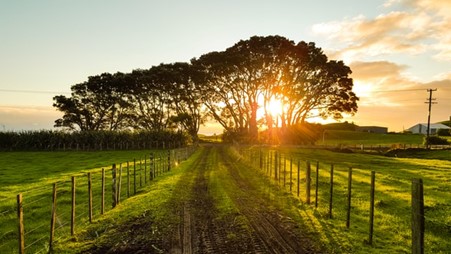Brad Ransome is a property developer and the CEO of Hatteras Holdings, a real estate investment and construction company in North Carolina. In the article below, Bradley Ransome discusses the recent run on rural land purchases throughout the country and how the near term is looking for that market.
As with any market, Brad Ransome reports that US land sales are greatly affected by the economic pull of supply and demand. 2022 looks set to break records as the market for available land dries up, pushing prices up to new highs. These effects are further exacerbated by high demand in already-expensive regions.
In this post, Brad Ransome takes a look at the current state of land sales in the United States. He’ll examine how a short supply of available land has driven up prices, forcing many potential home buyers out of the market. Ransome will also discuss how growing demand has worsened the situation and what the future may bring.
Higher Demand in Small-Town America
Although it’s a little too soon to call it urban flight, Bradley Ransome explains there has been a marked decrease in the number of people moving to urban areas in recent years. Instead, many Americans are moving to smaller towns around the nation. This demographic shift has driven up demand for land and real estate throughout lesser-developed areas.
Brad Ransome reports that a recent study found that 35% of realty agents reported an increase in the number of urban buyers looking for homes in rural or suburban areas. Similar findings show that rural home buyers are also more willing to spend more on their purchases than before the COVID-19 pandemic.
This growing demand and increased willingness to spend more has made land sales more expensive and transformed the industry into a well-situated seller’s market.
Supply-Side Hit by Shortages
Bradley Ransome explains that despite a growing demand to live in smaller towns, American urbanites are unfortunately grappling with a lack of available land. This may sound unlikely considering the vast expanses of unused land in the United States but much of America’s open land is inaccessible, publicly owned, or undeveloped.
During the COVID-19 pandemic, the real estate market was rocked by a massive decline in development and construction. This extends beyond simply building homes, though. It also affected how open land was managed and maintained, leading up to potential land sales.
What available land there was has quickly been bought up by hopeful urbanites looking to escape high-price lifestyles in overpriced cities. Now, Brad Ransome says there’s a clear shortage of available developments and land, causing the perfect storm of high-priced offerings.
High Prices are the New Normal
Brad Ransome explains that the combination of higher demand and limited supply has led to rapidly escalating prices for land and real estate. In some cases, the price of land has increased by as much as 10% in just a few years. This trend is most apparent in rural areas, where the average price of an acre of land has increased around 7% from $3,160 in 2020 to $3,380 in 2021.
In some states, such as Texas, the number of land sales has increased dramatically, driving prices far higher than they were just a few years ago. In 2021 alone, the average number of sales in Texas reached record-breaking highs, rising 37% in just two years. In west Texas, things are even more drastic, with the number of land sales up more than 50%.
Bradley Ransome says this sudden interest in Texan land has pushed prices up around 9%, forcing many locals to put off plans to buy homes or invest in property within their own home territories. For now, the average price of land in Texas sits at around $3,250 per acre but these values are expected to rise even higher as more and more buyers flock to small-town America.
Will Land Prices Remain High?
It’s hard to say for certain what the future will bring but, for now, it seems that high prices and limited availability are the new normal when it comes to US land sales. Brad Ransome says the combination of increased demand for rural property and a decrease in construction and development has resulted in a perfect storm for sellers.
As more people look to escape the high costs of living in cities, the demand for land will only continue to increase. Unless there’s a sudden surge in development or a change in the way that land is managed, it’s likely that prices will continue to rise, making it difficult for many would-be buyers to enter the market.
Final Thoughts
The current state of US land sales doesn’t look good for buyers. Increased demand and decreased supply have led to a seller’s market, where land is being bought up rapidly and prices are skyrocketing. Unfortunately, though, this trend is unlikely to shift in the near future unless there’s a sudden change in how land is managed or developed.








